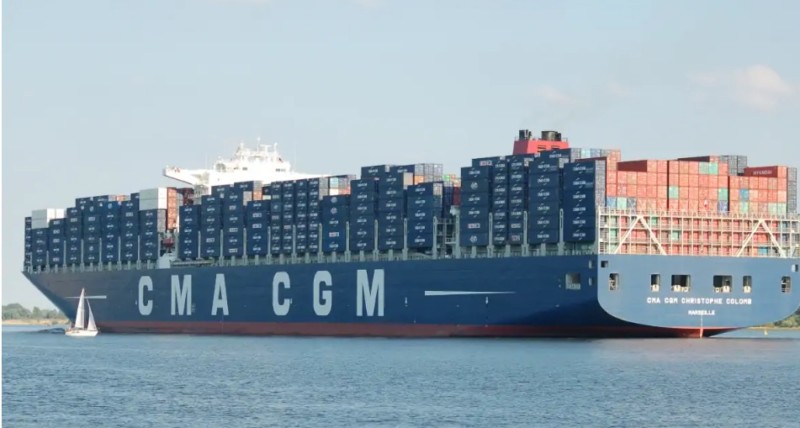
The Northeast Passage, which has been discussed by navigators since the 17th century as one of the fastest ways to link Europe and Asia, is on the verge of becoming a reality to serve Moscow’s geopolitical ambitions. Russia would then become an essential transit hub between the East and the West, disrupting global maritime traffic. But behind the myths, is this project too ambitious for Russia’s resources?
Stretching over 3,500 miles, the Northeast Passage will link the Barents Sea to the Sea of Okhotsk, passing through the Bering Strait, and running along Russia’s northern coast, long neglected. One myth associated with this maritime route emphasizes the « opportunity of climate change. » Indeed, the Arctic is often cited as one of the territories that could « benefit » from an increase in global temperatures, with the melting of ice that hinders navigation beyond a certain latitude. From a purely meteorological perspective, the assertion can be defended—indeed, the maximum extent of the Arctic ice sheet continues to shrink due to climate change, potentially opening up some navigation zones in the northern seas. However, this claim becomes highly questionable when considering the full range of climate consequences.
The melting of sea ice is accompanied by two phenomena in this region, one at sea and one on land, which could make navigation in the Northeast Passage just as complex. At sea, the increasing frequency of extreme weather events is one of the main effects of climate change observed worldwide: storms, massive flooding, heatwaves, and extreme heat episodes are becoming more frequent. In northern Russia, the increase in intense storms could make navigation just as difficult and dangerous as before. On land, rising temperatures lead to the thawing of permafrost, weakening the soil on which the infrastructure along the route rests. In 2020, in Norilsk, the collapse of the ground above an oil reservoir, caused by the softening of the permafrost, resulted in a regional ecological disaster. Thus, the navigation systems, ports, liquefied natural gas (LNG) terminals, and other infrastructure meant to ensure the route’s operation are themselves directly threatened by climate change, significantly questioning the idea of an « opportunity » tied to melting ice.
This climatic factor especially requires Russia to make colossal investments to cope with the challenges posed by these increasingly extreme phenomena. However, with economic sanctions and restricted access to many Western technologies, Russia has no choice but to turn to its Chinese neighbor.
China’s Growing Presence
More than Russia, it is China that is interested in the Northeast Passage, primarily for economic reasons—shortening the maritime route from China to Europe by avoiding the Indian Ocean and the Suez Canal—but also, more distantly, for geopolitical reasons, gaining additional access to the West for its naval forces. China thus looks at the opportunity of this route with renewed interest, particularly given the growing tensions with Taiwan that could complicate the route for Chinese commercial ships to the South China Sea. Chinese shipowners are eager to invest in this large Russian project, as evidenced by the infrastructure investment agreement signed in June 2024 during the Saint Petersburg International Economic Forum. This agreement goes beyond simple maritime traffic issues, as China plans to become the primary supplier of transit control technologies, including low-orbit satellite constellations for telecommunications in the Arctic.
For China, which has self-proclaimed itself as a « near-Arctic state, » firmly establishing itself in Russian infrastructure, imposing its navigation control software, telecommunications standards, and the financial and technological involvement of its state-owned enterprises amounts to indirect control. It is no coincidence that Beijing has secured technical assistance from Moscow for the construction of nuclear-powered icebreakers, a technology that had previously been closely guarded by Rosatom.
The Northeast Passage: A Challenge Too Great for Russia?
Taking into account the aforementioned factors that should temper the usual enthusiasm surrounding the Northeast Passage, Russia is still advancing on this project. The revision of Russia’s naval strategy in 2022 confirmed the Arctic’s place as the most important region, with the Pacific coming in second, thus indirectly emphasizing the importance of the Northeast Passage. Likewise, maritime traffic along the route continues to grow, with a record of 35 million tons transported in 2023. Chinese actors, who are multiplying agreements with their Russian counterparts, are, of course, taking the lion’s share. However, while growth is real, it remains limited and, in comparison to other regions (Suez: 1.6 billion tons in 2023), modest.
Moreover, Russia is imposing its own navigation rules on the Northeast Passage, violating international maritime law, particularly regarding the principle of freedom of navigation. In 2022, a new Russian law on military ship navigation in the Northeast Passage required all state vessels to notify Russian authorities three months in advance before passing through the route. While the 2020 law on navigation in the Northeast Passage for commercial ships already aimed to create obligations to use Russian icebreakers, thus restricting traffic, the 2022 law is also part of a broader legal assertion by Russia to assert its « sovereignty » through a harder stance. In any case, this is likely the only real lever left in Russia’s hands, given its growing technological and economic dependency on China.



